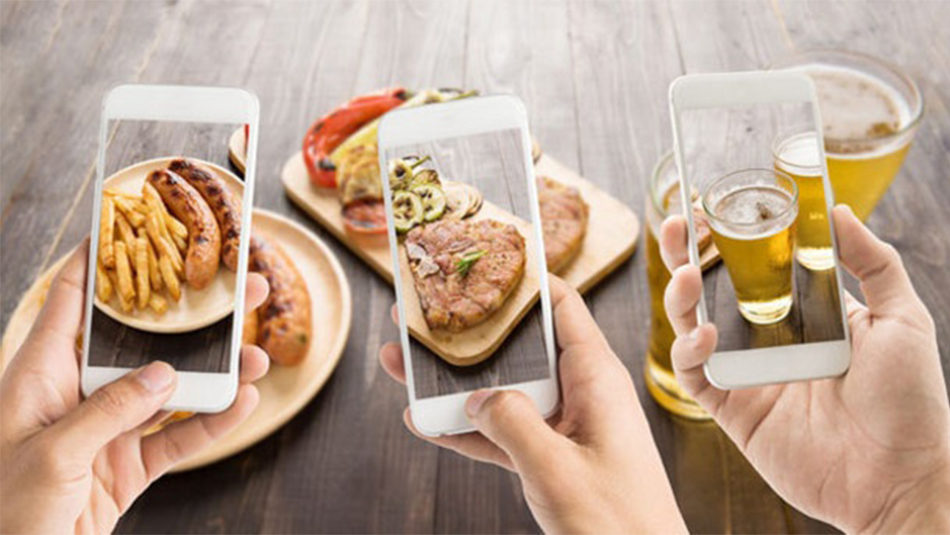
What Food Brands Need To Know About Influencer Marketing
For food brands, content marketing works to attract and engage the right audience with the intention of selling product directly to consumers or increasing exposure on menus. Building an audience usually takes time, but there is one proven shortcut: work with influencers.
Influencer marketing is a form of relationship-building—a way to develop a connection with people who can give you access to an audience you’d probably never reach on your own.
Many marketing strategies aim to reach the masses, but this approach focuses on valuable individual influencers—ranging from niche bloggers to celebrities—who communicate regularly to large followings via social media platforms and high-traffic sites. Whether it be nutritional guidelines, trendy recipes, or enthusiastic endorsements, consumers want reliable sources when it comes to food. In a recent Twitter study, 40% of respondents said they’ve purchased an item online after seeing an influencer they follow use it.
A generation ago, marketers would put well-known celebrities on the front of cereal boxes. Now online influencers sell products to anyone with a smartphone, so celebrity names have evolved into “handheld names.” In the interview with Adweek, Graham said, “People are looking at their phones, they’re reading what influencers say and then they’re telling their friends.”
So if influencer marketing isn’t a part of your strategy yet, maybe it should be. Focusing on niche food bloggers is a great place to start.
How to Partner with Influential Food and Commodity Bloggers
Establish Goals
What are you trying to accomplish by leveraging an influencer? Perhaps your main goal is to drive traffic to a particular landing page, or ask a targeted audience to sign up for a newsletter, take a quiz, attend an event, enter a sweepstakes, or purchase a seasonal product. Also, determine how you’ll measure the success of the partnership.
Set a Realistic Budget
Contrary to popular belief, bloggers typically aren’t free. They are business professionals just like you and expect to be compensated for their time. A celebrity-level influencer will cost thousands, but many micro-influencers work with brands at hourly or project rates. Check websites for rate cards.
Think About Tactics
Given the above, what do you want a blogger to do for your brand? Endorse or review a product? Be a guest contributor for your company’s blog? Make entertaining cooking videos? Host a Twitter party? Or would you like to guest blog for her? Identifying the blogger’s role will ease identification of who will represent your brand best.
Research Options
Consult Alexa and Quantcast for site analytics and social stats of top food bloggers. If your strategy includes a video, focus on bloggers with a heavy YouTube following. Also, don’t discount up-and-comers. While they may not have a massive following yet, it may be just a few months before they top the charts. Plus, they’ll appreciate you taking a chance on them early and could become a loyal, long-term brand advocate.
Dive Deeper to Choose Wisely
Make sure top contenders align with your brand identity:
- Notice how the blogger recognizes other brands she represents. Are there any conflicts of interest? Are the mentions positive and professional?
- If your brand is more conservative and family-focused, you’ll want to find a blogger who has a similar style.
- Watch out for hot-button topics that could impact your brand negatively or positively like gluten-free, food allergies, locavore, etc.
- Look at the photography. Is it appealing? Do you think the blogger could capture the essence of your brand?
- If you’d like the blogger to develop recipes, try one from her blog. Make sure it’s easy to follow and most importantly, it tastes good!
- Send a question or comment to see how quickly she responds, as consumer engagement is a key reason to partner with bloggers.
Build a Relationship
Once you’ve made a decision on a best-bet blogger, start to nurture a relationship. Share their content. Re-share what they post. Comment on their blog posts, Facebook posts, and books.
Make Your Pitch
Invest time in providing your chosen influencer with all the information and tools needed—goals, KPIs, campaign and promotion ideas, budget, and timeline—in a succinct, complimentary email. Follow up via social channels and by phone if possible, but respect their busy schedules and be patient.
Influencer marketing can be very effective. Do your research and make a sincere effort to engage influencers and build trust. Keep in mind that these can become mutually beneficial relationships, but value the blogger because they have the built-in audience, trust, and tools to make your food brand more popular and desired.
This article originally appeared in SmartBrief on February 9, 2017.





